
The prospect of a biological control can sound both attractive and alarming at the same time. In effect, we are unleashing an army of tiny creatures to fight off the pests that are spoiling our plants. So many gardening catalogues offer biocontrols and the concept sounds great, but should we be doing this? Is it considered organic? to gardeners are not toxic to humans and of little risk to the environment.
The most common types are mites, predatory wasps and microscopic worms called nematodes. They are suitable for organic growers, but in fact they have been used much more widely because they have many advantages over synthetic pesticides. There is no risk of contaminating produce, and pests don’t develop resistance to biocontrols in the same way that they do to chemicals.
HOW TO USE THEM
You need to think ahead. It’s best to apply a biocontrol just when you notice pest numbers increasing as most are less effective at dealing with severe infestations. They are generally ordered in the post, so will take time to arrive and they should be used soon after receipt.
Mites and wasps are most effective when used in a glasshouse as when used outside they tend to move away from where you have put them. Nematodes are watered into the soil, and move much more slowly, so can be used outside without fear of them escaping.
Most biological controls will function best within the range 10-30C (50-86F), although the nematodes can tolerate soil temperatures down to 5C (41F). It’s really important to stick to the instructions about how and when to apply them, or you will be wasting your money.
This story is from the May 2023 edition of Kitchen Garden.
Start your 7-day Magzter GOLD free trial to access thousands of curated premium stories, and 9,000+ magazines and newspapers.
Already a subscriber ? Sign In
This story is from the May 2023 edition of Kitchen Garden.
Start your 7-day Magzter GOLD free trial to access thousands of curated premium stories, and 9,000+ magazines and newspapers.
Already a subscriber? Sign In

SEPTEMBER SPECIALS
This month, with sweetcorn, figs and blackberries on the menu, Anna Cairns Pettigrew is not only serving up something sweet and something savoury, but all things scrumptious

FLAVOURSOME FRUIT AUTUMN RASPBERRIES
September - is it late summer or the start of autumn? David Patch ponders the question and says whatever the season, it's time to harvest autumn raspberries
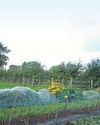
SOW GREEN THIS AUTUMN
Covering the soil with a green manure in winter offers many benefits and this is a good time to sow hardy types, says KG editor Steve Ott

A HISTORICAL HAVEN OF FRUIT AND FLOWERS
KG's Martin Fish takes time out from his own plot to visit a walled garden in Lincolnshire which has been home to the same family for more than 400 years

RESTORING THE BALANCE
The phrase regenerative gardening is often heard in gardening circles, but what is it? Can it help you to grow better veg? Ecologist Becky Searle thinks so, and tells us why
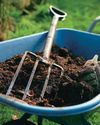
WASTE NOT, WANT NOT
Garden Organic's Anton Rosenfeld shares his expertise on using compost made from green bin collections with handy tips on getting the right consistency and quality
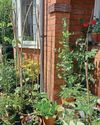
Celebrating Organic September!
In this special section we bring you four great features aimed at improving your crops and allowing nature to thrive
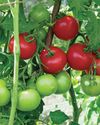
SEEING RED
Do your tomatoes have a habit of remaining stubbornly green? Or perhaps you're lucky to enjoy lots of lovely fruits - just all at once. Either way, Benedict Vanheems is here with some top tips to ripen and process the nation's favourite summer staple
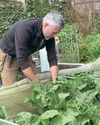
NEW KIDS ON THE BROCCOLI!
Rob Smith is talking broccoli this month with a review of the different types available and suggestions for some exciting new varieties to try
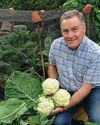
A NEW kitchen garden
Martin Fish is getting down to plenty of picking and planting on the garden veg plot, while Jill is rustling up something pepper-licking good!